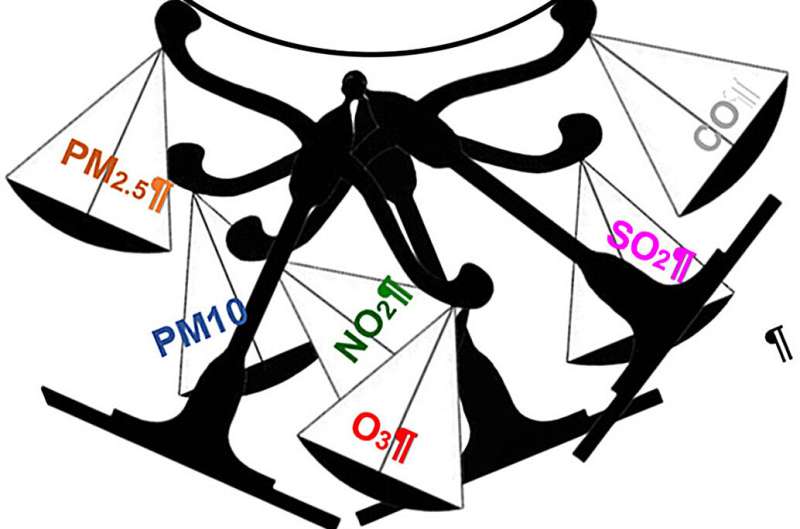This article has been reviewed according to Science X's editorial process and policies. Editors have highlighted the following attributes while ensuring the content's credibility:
fact-checked
trusted source
proofread
Dallas-Fort Worth air quality continues to miss EPA goals for safety

Air quality in the Dallas-Fort Worth metropolitan area continues to miss safety levels set by the Environmental Protection Agency (EPA) and is unlikely to meet EPA goals anytime soon, according to new research from The University of Texas at Arlington.
Purnendu "Sandy" Dasgupta, professor of chemistry and biochemistry and the Hamish Small Chair of Ion Analysis at The University of Texas at Arlington, said the region's low population density, lack of widespread public transportation, and reliance on cars contribute to its poor air quality. Its ozone values have exceeded safety levels set by the EPA for the last 20 years.
"Compared to other metro areas, DFW is unique in that the majority of the nitrogen dioxide and ozone in the air comes from auto emissions, construction equipment, and airport traffic rather than discharge from industrial sources like petrochemical manufacturing or steelmaking," said Dasgupta, co-author of a new study published in Talanta.
"Although automobile traffic and thus ozone levels declined during COVID-19, DFW is now at 'severe' nonattainment of the EPA air quality standards. Now that the transient lull of vehicular traffic is gone, with the rapid growth of the region, our chances of attaining regulatory limits are slim."
Poor air quality can lead to health problems such as heart disease, asthma, and low birth weight. In addition to the human toll, companies in the region can face steep fines from the EPA for violating the federal Clean Air Act.
Researchers were surprised to find that Tarrant County overall has a greater incidence of poor air quality, primarily caused by high ozone concentrations, despite having a significantly smaller population than Dallas County.
"This suggests some of the pollution seen in Tarrant County may actually be transported into it from bordering regions, notably Dallas County, which lies to the east," said co-author Seth Horn, who was an undergraduate research assistant in Dasgupta's lab and is now a graduate student at Purdue University.
Ozone exceedances occur more in the summer than in any other part of the year. The researchers noted that the summertime wind data from Arlington Municipal Airport and Dallas-Fort Worth International Airport indicated that prevailing winds can transport a significant amount of the air mass from Dallas County over to Tarrant County.
"This trend can be further noticed when one plots the Dallas County air quality values against the difference between the air quality values in the two counties," Horn added. "Although the magnitude in difference can be small, the trend is consistent."
More information: Seth A. Horn et al, The Air Quality Index (AQI) in historical and analytical perspective a tutorial review, Talanta (2023). DOI: 10.1016/j.talanta.2023.125260
Provided by University of Texas at Arlington

















